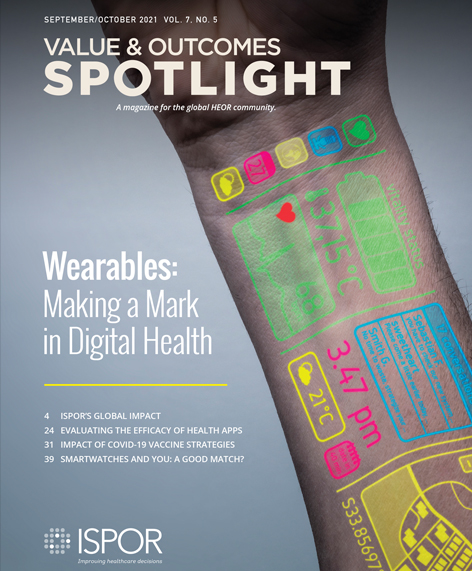BYOD (Bring Your Own Data)
Wearable technology has come a long way from the mechanical pedometer, an unreliable, inaccurate, and clunky device first introduced in the 1920s. Today, a wide variety of precise, lightweight, and multifunctional electronic and digital devices are available including watches, eyewear, earbuds, rings, and many more that—among other functions—measure our activity and collect biometric data. Whether tracking the number of steps walked or calories burned, heart rate, oxygen saturation, sleep patterns, blood pressure, glucose, or medication adherence, users of these devices are generating and capturing data in real time that provide valuable insights into their health and wellbeing outside of traditional physician visits. These patient-generated data help to fill the gap between those visits and provide a more holistic view of patient health. This additional data and monitoring should, in turn, improve medical decision making and lead to better health and patient outcomes. Tracking and capturing such data can also support payers in making reimbursement decisions by filling in data gaps and reducing uncertainty.
Empowering patients and involving them in the collection of their own health data creates a sense of accountability, responsibility, and ownership of their healthcare. This active patient engagement can lead to improved health habits, improved patient outcomes, and potentially greater cost savings. The collection and ownership of their data engenders a more motivated and educated patient who can proactively identify potential medical concerns or issues s/he may be facing and seek professional help more quickly to address them. Proactivity of this sort may lead to earlier diagnoses and treatments that can only further improve patient outcomes. For example, elderly patients can benefit from the use of these devices in measuring blood pressure, reporting falls, creating medications alerts, and other health- and safety-related data. Patients in low- and middle-income countries and rural and remote locations can also benefit from these technologies by gaining access to improved health services through telehealth and capturing their own patient-generated data that can be remotely transferred to a centralized location for analysis.
Currently over 350,000 health apps are available that are often paired with wearables to provide digital data to various stakeholders such as patients, caregivers, and providers for optimization of care and treatment. Despite the many benefits of wearables, multiple challenges and barriers for and in their use exist, including clinical appropriateness of outcomes, accuracy and validity, access issues arising from the cost of wearables, data management, limited standards and guidelines, and data security. As an example, in this issue, Stephen M. Schueller discusses navigation of the digital mental health landscape using One Mind PsyberGuide, a resource that helps individuals through product reviews that capture credibility, user experience, and transparency around data security and privacy.
As the digital health field continues to evolve and become more mainstream, health economics and outcomes research will be essential in addressing these challenges and demonstrating—with evidence—whether these digital devices improve patient outcomes, expand access, and/or reduce healthcare utilization and costs.
As always, I welcome input from our readers.
Please feel free to email me at zeba.m.khan@hotmail.com.

Zeba M. Khan, RPh, PhD
Editor-in-Chief, Value & Outcomes Spotlight
Explore Related HEOR by Topic

